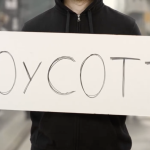By The Malketeer
Brewing a Storm: The Perfect Blend of Challenges Facing Starbucks in Malaysia
Once the darling of urban coffee enthusiasts in Malaysia, Starbucks is now staring at a cold reality.
With 50 out of 408 stores temporarily closed, a potent mix of boycotts, evolving consumer tastes, and rising competition has turned the brand’s once-steaming momentum into a lukewarm pause.
But what’s truly behind this shift, and what does it signal for the future of global chains in Malaysia?
Boycotts: Brewing More Than Awareness
Boycotts targeting Western brands aren’t new in Malaysia; they ebb and flow with global political tides.
The Israeli war in Gaza sparked one of the most intense waves yet, turning social media into a battleground of hashtags and call-outs.
Unlike its fast-food peers, Starbucks has been disproportionately affected.
It’s not just the symbolism of the brand that’s at stake, but a deeper issue: loyalty.
When emotions run high, customers who were once casual latte sippers turn into conscious abstainers, a shift that’s hard to reverse.
What’s more, these boycotts come at a time when consumers are increasingly aware of what brands represent beyond their products.
“Boycotts against Starbucks are different,” noted one industry insider.
“They’re not just about coffee—they’re about ideology.”
This narrative puts Starbucks in a challenging position: double down on its global brand ethos or localise in a way that resonates with shifting regional sentiments.
The Rise of Local Rivals: Challenging the Status Quo
While boycotts might explain the initial drop in foot traffic, they’re only part of the story.
Local players like Zus Coffee and lifestyle-driven competitors like Chagee are rewriting the script on what it means to sip and savour.
Offering a mix of affordability, variety, and a tailored experience, these brands tap into what Starbucks hasn’t fully embraced: a uniquely Malaysian coffee culture.
These newcomers have a finger on the pulse of today’s consumer, serving up not just beverages but identity—whether it’s a hyper-local brew or a trendy new take that aligns with health-conscious lifestyles.
The irony?
Starbucks, once the disruptor that set a new standard for coffee culture, now finds itself outpaced by agile competitors more adept at catering to local preferences and pricing demands.
Financial Strains: More Than Just a Blip
Berjaya Food’s reported RM33.68 million loss is more than a line item in a quarterly report—it’s a flashing warning sign.
Starbucks Malaysia’s financial challenges go beyond immediate boycotts; they point to an operational model under pressure from rising costs, from rental fees to logistics.
Cost-cutting measures have been implemented, but with competitors nipping at its heels, even slashing expenses can only take the company so far.
This financial struggle isn’t unique to Malaysia.
Across Europe, Starbucks is wrestling with a similar conundrum: how to keep premium pricing while customers increasingly question what they’re paying for.
The once-reliable allure of an oversized cup filled with frothy, syrupy bliss may now feel more like an overpriced indulgence in the age of cost-of-living crises.
A Tale of Consumer Loyalty and Resilience
The divergence in how boycotts impact Starbucks versus fast-food titans like McDonald’s and KFC is revealing.
Why does loyalty waver more easily for one brand than another?
The answer may lie in the essence of their offerings.
McDonald’s burgers and KFC’s crispy chicken have reached iconic status with recipes that withstand competition and even political boycotts.
They represent affordable indulgence, staples that families continue to reach for during lunch breaks and festive gatherings alike.
Starbucks, on the other hand, positions itself as a lifestyle brand—a more vulnerable position in the face of shifting tides.
The perception that its drinks are sugary “desserts in disguise” adds fuel to the fire for health-conscious consumers reconsidering their options.
For many Malaysians, a RM15.90 coffee needs to offer more than ambiance; it needs to align with personal values and evolving tastes.
The New Playbook: Adapt or Fade?
So, what’s the path forward for Starbucks in Malaysia?
While the company’s iconic green siren may not disappear from the streets overnight, it’s clear that change is needed.
A reinvention could involve a blend of localisation—offering beverages that align with regional palates—and a focus on transparent, socially aware initiatives that resonate with customers.
More partnerships with local producers, a push for sustainability, and targeted marketing campaigns could help Starbucks reconnect with the heart of the Malaysian consumer.
Savouring the Lessons
The story of Starbucks in Malaysia is more than just a cautionary tale for Western brands operating abroad—it’s a vivid reminder that market dynamics are always shifting, driven by not just competition but cultural undercurrents and consumer sentiments.
In the end, it’s not just about who brews the best coffee; it’s about who adapts fastest to the flavour of change.
MARKETING Magazine is not responsible for the content of external sites.










